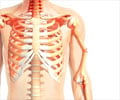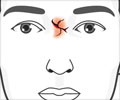Scientists from Washington’s University of Leeds and Queen’s University Belfast have come out with biological cements that repair ‘burst fractures’ of the spine. So far, the Engineering and Physical Sciences Research Council (EPSRC) has put 500,000 pounds behind this project.
Bone cements such as those used in joint replacement surgery are already being used to brace damaged vertebrae of patients having diseases such as osteoporosis. Still, ‘burst fractures’ to the spine are much tougher to treat.“This type of fracture causes the vertebra to burst apart and in severe cases fragments of bone can be pushed into the spinal cord. Surgeons may be able to join bone fragments together and stabilize the spine with the use of metal screws and rods, but patients with these injuries are often in a really bad way, so the less invasive the treatment, the better,” gives Dr Ruth Wilcox of Leeds’ Institute of Medical and Biological Engineering.
Queen’s University researchers are specialists in their field. They develop and test synthetic biomaterials for the repair of bone defects. “These materials can be delivered to the fracture site by injection and mimic the chemical composition of bone itself,” Dr Fraser Buchanan, from the University’s School of Mechanical and Aerospace Engineering vouches.
Expertise in computational modeling of the spine marks the team from Leeds. Now, they will be providing their collaborators with data to help in the development of novel biomaterials, as well as to examine how they will perform in patients.
According to experts, burst fractures are more frequent in younger people. Till now, specialists are clueless regarding the long-term consequences of using existing cements for treating this type of injury.
Researchers say some evidence exists that few patients with osteoporosis, who tend to be older, can develop fractures in the vertebrae next to those treated with vertebroplasty.
Advertisement
As for now, the scientists hope that the use of bone cements for burst fractures would be less complicated, faster, and much less invasive for patients. They say it will also reduce both recovery time and expenses.
Advertisement
ANN/C











